|
|
|
| Thu Feb 21, 2008 - 1:58 AM EST - By Jennifer Chappell | |
|
|
|
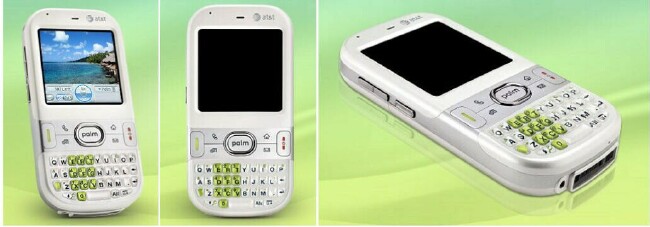
Since Palm and AT&T released the GSM Palm Centro on Tuesday, several reviews have popped up around the tech community. I've sure enjoyed reading them all and watching the video reviews. I wish I could give my personal take on the GSM Centro but I haven't gotten my greedy little hands on one yet. Until I do, I'll continue to live vicariously through all of reviews on the web and via the Centro posts in our TreoCentral forums.
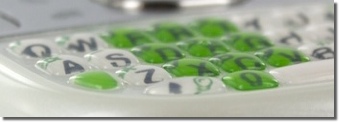
In the meantime, let's take a look at some of the GSM Centro reviews out there. If you haven't read Dieter's excellent and extensive review, go check it out. Dieter, along with some of the other reviewers, brings up the fact that the GSM Centro from AT&T doesn't have 3G like the Sprint CDMA version does:
The Centro is also able to browse the web, of course. Unfortunately, unlike it's Sprint cousin, it's only able to do it at EDGE speeds. A good rule of thumb for EDGE is that it's slightly faster than a basic dial-up connection, but will often feel slower than you'd like it to be. One of the happy side-effects of the iPhone's splash is that AT&T has worked very hard to beef up their EDGE network, so connections these days tend to be faster and more reliable than they were even a year ago.
And in his conclusion, Dieter sums up some of his thoughts geared to both the non-smartphone user and the Treo user:
For the non-smartphone user:
If you've been using a standard "feature phone" that does little more than make calls, take pictures, and painfully text your friends with T9 typing, you've been missing out. A Centro can do everything your current phone does and much more without making you feel like you have a brick in your pocket or that you need to read a 500 page manual just to figure the thing out.
For the Treo user:
You don't need me to tell you that the PalmOS is getting awfully outdated these days. With the Centro, you'll find virtually no improvements, though I have to say that it still does the job for me when I need it. What's worse, you can look forwards to a slowed pace of 3rd party development and likely no direct OS improvement from Palm (at least until Nova arrives).
Matthew Miller over at The Mobile Gadgeteer seems to like the GSM Centro. He's written up a review, plus he has a video overview which is nice. Matthew talks about all the apps that are on the GSM Centro. He mentions that the AT&T Centro comes with quite a few subscription services.
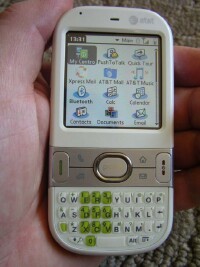
Matthew brought up the matter of the GSM Centro running on EDGE as opposed to 3G also:
Palm and AT&T said they only included an EDGE radio because EDGE has extensive coverage in the U.S. While this may satisfy the group of new first-time smartphone owners (which really is the target audience), I still don�t understand why they couldn�t have included a 3G radio just like they did with the Sprint Centro at the same cost. If they would have, then those of us within range of AT&T�s 3G network (which is most all of the metropolitan areas of the U.S.) could have taken advantage of the higher speeds and then when you are out of range it could drop to EDGE. Making a 2-year commitment to a device without 3G today in the U.S. doesn�t make much sense, unless you are buying a T-Mobile device where they do not have 3G yet.
Matthew says that the GSM Centro was pretty snappy and that he might get one for himself. Be sure to take a look at Matthew's great photo gallery.
Christopher Gavula from Gear Diary brings up the typical gadget "first impressions" that I mentioned the other day; people either love or hate a device.
Most import, for some folk, is the fact that Centro appears on the AT&T network in a brand new color � Glacier White. You�re either going to love the white with green combination or you�re going to hate it. I actually find it kind of interesting.
I too find it interesting and like I said, the green keys are rather unique.
Christopher likes the white color and the green number pad offset as number pad stands out nicely, lit or unlit. He's also pleased with the call quality and says that he gets excellent coverage, even in areas where signal quality is usually a little weak.
He does find some things that he doesn't like though, such as the MicroSD card not supporting SDHC and the fact that the card slot is hidden beneath the battery cover. Christopher also mentions that the shell could scratch too easily but says that since the Centro is priced so low, it wouldn't be very hard to replace the device. He also feels that the keys are too small for his hands and finds that the D-pad is difficult to use. He isn't too crazy about the earpiece placement either:
I also had a problem with the placement of the earpiece. To hear clearly, I had to hold the phone in an uncomfortable position � too far down on my ear. I would really need to use this with a Bluetooth headset to be able to tolerate it for any amount of time. Again, I really think it was designed with someone smaller than myself in mind.
But overall Christopher actually likes the Centro a lot even though he has some concerns.
Lisa Gade at MobileTechReview starts out her review comparing the GSM Centro to the Treo 680. If you recall, Dieter also compared the two devices. I remember back when the Sprint Centro was about to be released, many of our forum members were comparing the Treo 755p to the Centro.
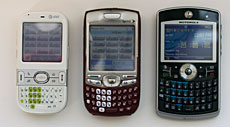
Lisa says that the Centro's touch screen trumps Microsoft Windows Mobile smartphones with its touch screen and higher resolution display. Hmmm, Lisa says that not only is the battery cover hard to remove, and a bit stiff to get back on, you must also remove the stylus to insert or remove the SIM card because the stylus runs above the left side of the SIM card. That's the first time I've heard that mentioned. Strange.
Lisa and the gang at MobileTechReview seem to like the Centro as do many other reviewers. They're impressed with the keyboard, finding it easy to type on even though it's smaller than the Treo's keyboard. Lisa says that the Centro feels great in the hand and is easy to operate one-handed, including the keyboard.
The Centro dares to be different, and we give it points for that. Whether you like the design is largely a matter of taste, and we found ourselves appreciating its looks and feel in the hand, despite the cheesy plastic casing. It looks hip even though it cries out "budget phone"-- it won't be mistaken for a ritzy feature phone or HTC device. The smartphone feels solid and decently make nonetheless, and we surmise it could take a few bumps and hard knocks and keep on dialing.
The Centro isn't a revolutionary, cutting edge device. But in its own way, it's starting a quiet revolution: this is the first touch screen PDA or smartphone to sell for only $99 at introduction. And it covers all the basics well: good phone quality, web browsing, messaging and email (including push email) along with MP3 playback support (once you get a hold of a stereo headset). the usual Palm ease of use, strong PIM apps to keep you organized and a QWERTY keyboard that's sure to please former feature phone users who are tired of T9. And we're happy to see Documents To Go 10 included with support for reading, editing and creating Word, Excel and PowerPoint documents. Power users will want to look at the Palm OS and Windows Mobile Treos or other competing power user smartphones, but for those who don't need everything but the kitchen sink, the Centro is worth a look.
TheStreet.com's Gary Krakow brings up the fact that the AT&T Centro doesn't have 3G and like Dieter, he says that the GSM Centro is as fast as the iPhone:
AT&T's Centro is a quad-band GSM world phone -- which uses AT&T's EDGE network for data. This means the new GSM/GPRS/EDGE Centro is slightly slower handling data tasks than Sprint's EV-DO Centro. On the other hand, the GSM Centro is just as fast as Apple's iPhone using the same data network and GPRS/EDGE-based phones usually last longer between charges than phones on 3G networks.
Gary says that even though the keyboard is small, he finds that he makes far fewer errors using it than with some larger keyboards on other smartphones. Interesting! From what I've read so far, most of the people who are having trouble with the keyboard are naturally those with large fingers. Note that I said, "most", not all. I have read some instances in which those with small hands have had some trouble typing on the keyboard.
Gary's review is overall a positive one. He finds the Centro's battery life to be adequate and regarding the lack of 3G, he says that Palm and RIM have figured out how to get the most out of mobile Web browsers that run on EDGE networks.
The phone itself makes and receives voice calls with aplomb, sends and receives text messages, handles personal and corporate email, lets you browse the Web with one of the best looking mobile browsers on the market, take and save photos and videos with the 1.3 MP camera and even listen to your favorite music through its built-in stereo speakers.
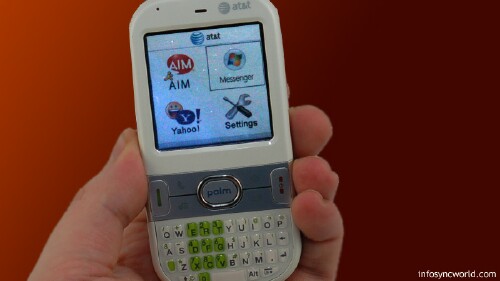
Philip Berne over at infoSyncWorld seems to like the GSM Centro too. Philip says that for Pros, the Centro has a cuter and smaller design that packs all the power of a full-sized Palm. Plus the built-in touchscreen is still a rarity on consumer smartphones. Regarding the small keyboard, he says:
The keys are even smaller than we remembered, and we're finally getting Palm's point that business power users might be willing to pay extra for larger keys.
As with many other reviewers, Berne had his thoughts on the web browser via EDGE:
The Palm Blazer browser is reliable, fairly quick, and very ugly. We've come to expect much, much more from a phone. When we were navigating to a mobile page, like the New York Times mobile homepage or Google's mobile Reader page, we were fine, and hardly noticed the slower network speeds, compared to Sprint's EV-DO Centro. But standard pages, like our image-rich homepage, were more jumbled, and sometimes needed to be loaded multiple times to get them right. Hopefully a desktop-grade mobile browser is on the horizon for Palm's upcoming OS improvements, because the Blazer software isn't cutting it any longer.
Shane Leopard from phonemag also checks out the GSM Centro and gives it an overall positive review. There are some adorable baby pics in the review, one with the baby holding the Centro. Shane says:
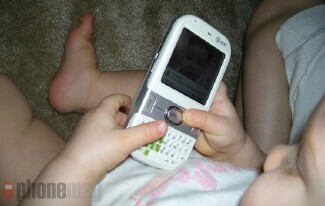
The Palm Centro really has very few drawbacks for me. The buttons are pretty small, even for a baby. I seemed to get around this by using the touch screen as much as possible. The screen itself is a little recessed which caused a little bit of dust build up within a day (this drives me nuts). I read some previews of people complaining about the green keyboard, but I personally like it as it separates the number pad from the full keyboard on such tiny little buttons. The battery life, however, was surprisingly good. I really like the phone, and the price ($99 after rebates) is definitely competitive.
Those are some great reviews and I'm sure there will be plenty more coming this week. I didn't realize that in order to access the microSD card slot you have to remove the battery door. It's really no big deal since most battery doors are fairly easy to slide off and on. I just somehow missed that little tidbit until I was reading one of the GSM Centro reviews this week. Thank goodness the card slot isn't beneath the battery like it is on some devices. Now that would be rather annoying.
Anyway, there are also some hands-on video reviews and photo galleries out there that you'll want to check out so pull up your drool bucket and have at it:
Can I have a drool bucket now please? This drool bib just isn't going to cut it anymore. Anyone??? There'd better be one nearby when the Black GSM Centro comes out next month. ;-)
Update: We've got some more GSM Centro reviews and hands-on articles...
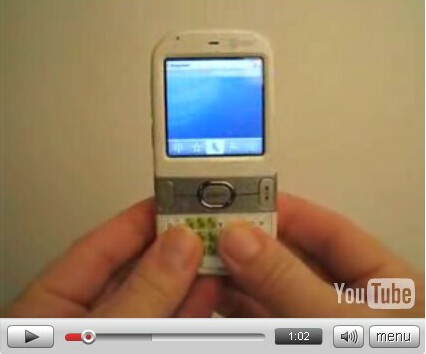
Here's one that my peabrain missed previously. I had some video reviews bookmarked via FoxFire but couldn't get YouTube to work on that browser for some odd reason. I forgot all about going back and watching them on IE or Opera until today. Duh.
David Ciccone over at Mobility Today has written up a review and there's a great video review too. David isn't a fan of the Centro's keyboard. He has big hands like my husband and you can really see how small the Centro looks in David's hands in the video. I understand why he would have a hard time typing on the smaller keyboard. David goes through many of the applications and shows a nice demonstration of MobiTV and XMRadio, which both look pretty good.
There is a mouth-watering gallery of very clear photos of the Centro too. You can see how glossy the white and green keys on the Centro look. I can almost feel that rubbery stickiness to the keys from that great front facing Centro photo.
Even though David doesn't like the small keyboard, he was overall impressed with the GSM Centro.
During our use of the Centro we felt this device definitely is a powerful device for an entry level user. One other kicker is that the device is available for just $99.99 with a voice contract. Once again Palm is giving more and more options at that $100 dollar mark which we feel is much needed!
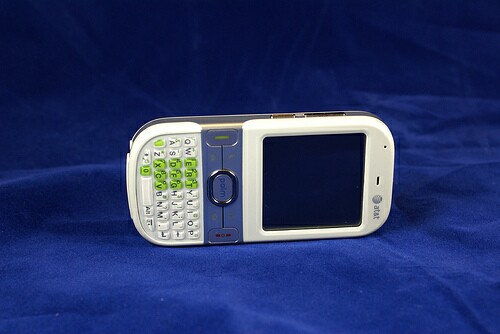
Here's another one I missed the first time around, darn it! Chris Leckness over at Mobility Site has put up a really nice gallery of GSM Centro pics. Chris mentions that he too had a hard time using the keyboard due to having big fingers. But he likes the Centro and says that it's a pleasure to use.
My 1st impression was WOW, that�s small! I got to play with Sprint�s version too, so it wasn�t a big shock how tiny, but it feels much smaller than you�d expect. Palm has done a great job with this device. It�s small, cute, but it also has limitations. Those limitations are quickly negated by the small price tag though.
Be sure to check out all those photos. I gotta tell ya, that Centro looks mighty sweet sitting atop that blue velvet! Mmmm, Mmmm! ;-)
And here's another one that I'd forgotten was bookmarked to look at later in another browser! Michael Oryl over at MobileBurn has written up a short review and put up a video and some pics.
Michael talks about the differences between the AT&T and the Sprint Centro. He mentions the lack of 3G on the GSM Centro and talks about the color scheme difference in the phones. Regarding the software differences, Michael states:
The rest of the differences between the Sprint and AT&T Centro devices are in the software. Mostly in carrier related services, to be exact. For example, the AT&T version has links for downloading the MobiTV and Music ID applications. There is also support for AT&T's Xpress Mail, which lets users link up with personal mail accounts (e.g. IMAP, Gmail, Hotmail) as well as get access to corporate email accounts that use Microsoft Exchange or Lotus Domino...
TreoCentral's Annie Latham talked about some other GSM Centro reviews in her Talkin' Treo column on Friday. She mentioned a video review by Gary Krakow from The Street that I hadn't seen yet when I had talked about his written review earlier in this review roundup. Below are the other reviews that Annie spotted and put in her column:
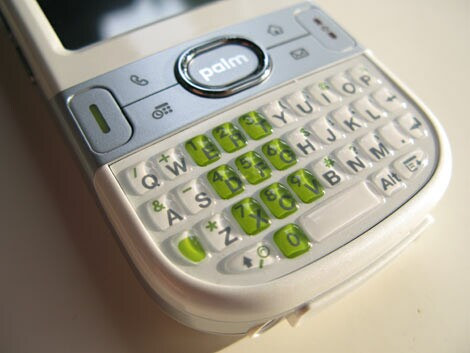
Andrew wrote:
�Overall there is no doubt that if you�ve never previously owned a smartphone you�ll quickly start to wonder how you managed to do without one for so long and praise the day that you finally got your hands on a Centro.�
AWright remarked:
�In my initial use of the AT&T Centro, I have been impressed with its overall stability, speed of getting from one application to another, and ease of use.�
Matt Hickey wrote:
�It�s here, and it�s cute, and it works, and it�s rad. I�ve always been a fan of the Treo line from Palm, so I was stoked to open this guy up today.�
Copyright 1999-2016 TreoCentral. All rights reserved :
Terms of Use : Privacy Policy
TREO and TreoCentral are trademarks or registered trademarks of palm, Inc. in the United States and other countries;
the TreoCentral mark and domain name are used under license from palm, Inc.
The views expressed on this website are solely those of the proprietor, or
contributors to the site, and do not necessarily reflect the views of palm, Inc.
Read Merciful by Casey Adolfsson